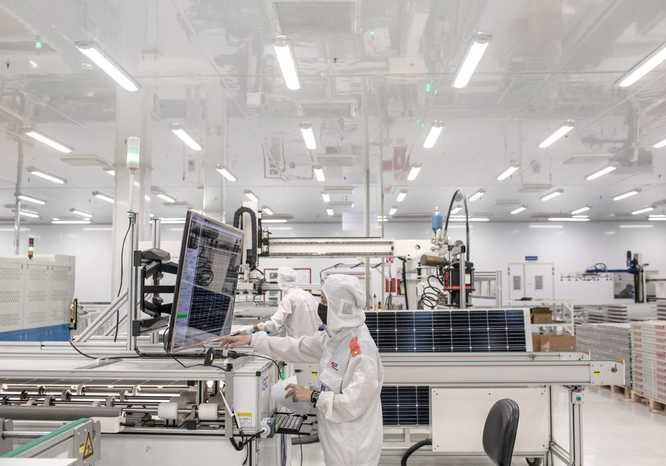Vietnam Is a Trade War Winner. Now It Has to Figure Out How to Stay Ahead

Hailed as the one economy racking up real wins in the U.S.-China trade war, Vietnam now needs to ensure that its gains don’t slip away just as quickly.
It’s done well so far out of the flight of manufacturers from China – but it’s vulnerable to a broader lesson that companies are drawing from the trade conflict: Don’t put all your eggs in one basket.
Or sportswear, in the case of Eclat Textile Co., a supplier for global giants like Nike Inc. Eclat left China in 2016 because managers couldn’t find enough local manpower, bulking up its presence in Vietnam instead. Now, as the trade war heats up, the company finds itself vulnerable there too.
“Judging from the global situation, the most important thing now is diversification,” Chairman Hung Cheng-hai said in a recent interview. “Now 50% of our garments are made in Vietnam, so we are not diversified enough.”
Vietnam ranks toward the bottom of the Drivers and Disrupters protectionism index, indicating heightened risk as the U.S. turns its back on past commitments to free trade.
The country managed to stay out of Donald Trump’s crosshairs for a while, ostensibly helped by good feelings after it hosted a February summit between the U.S. president and North Korean leader Kim Jong Un.
Vietnam inked billions in purchases from Boeing Co. and General Electric Co. during that visit—seeking to rein in its trade surplus with the U.S., a key scorecard in Trump’s foreign policy.
By May, it seemed like they weren’t trying hard enough. The U.S. Treasury Department added Vietnam to a currency and economic policy watch list over its bilateral surplus. In June, Trump described Vietnam as “almost the single worst abuser of everybody.” And in July, the U.S. slapped tariffs of more than 400% on steel imports from Vietnam, saying they originated in Taiwan and South Korea.
In the first half of 2019, Vietnam’s trade surplus with the U.S. rose 39% to $25.3 billion.
Vietnamese officials say they’re making good-faith efforts to trim it. But it’s a struggle for local businesses: even a surge in American demand for Vietnamese solar panels, which might normally count as good news, puts executives on edge - fearing an angry response from the White House.
There are other challenges for a fast-growing manufacturing base like Vietnam, including the risk that its port capacity and customs staff could be overwhelmed by surging orders.
Shipping container capacity will need to grow at almost twice its 10%-12% pace of the past decade to keep up with new demand, Bloomberg Intelligence research shows. The government recognizes a shortfall of around $4 billion to develop its ports. Big-figure deals have yet to come to fruition.
For East Asia’s early developers – Japan and Korea – overcoming those kinds of logistical barriers was tough. At the same time, U.S. commitment to free trade provided an assurance that big-ticket investments would pay off. For Vietnam, and others coming late to the export party, U.S. protectionism means that certainty is a luxury they will do without.
Resources by Bloomberg Businessweek, Michelle Jamrisko, Oct. 29, 2019